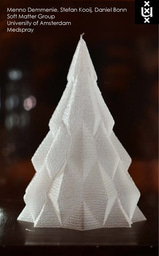Caren: A Newly Discovered lncRNA Championing Heart Health
Published in Biomedical Research

In our recent study, we identified a novel long non-coding RNA (lncRNA) named "Caren" (Cardiomyocyte-enriched non-coding transcript) that plays a pivotal role in maintaining heart health. Caren is abundantly expressed in cardiomyocytes and assists the heart in functioning optimally, even under stress conditions. It achieves this by fine-tuning the cell's DNA damage response (DDR) system and promoting mitochondrial energy production. Specifically, Caren suppresses the production of a protein called "Hint1" (Histidine Triad Nucleotide Binding Protein 1), thereby preventing excessive activation of the DDR pathway and supporting mitochondrial function. This discovery offers promising avenues for developing new treatments for heart failure.
Heart failure (HF) remains a leading cause of morbidity and mortality worldwide, with limited effective therapeutic options. Recent research has highlighted the significance of non-coding RNAs, particularly lncRNAs, in regulating various biological processes, including cardiovascular functions. However, the specific roles of many lncRNAs in heart health and disease are not fully understood.
Through a gene-trapping approach in mouse embryonic stem cells, we identified Caren as a cytoplasmic lncRNA abundantly expressed in cardiomyocytes. Unlike many nuclear lncRNAs that regulate gene expression at the transcriptional level, Caren operates in the cytoplasm, influencing post-translational processes.
Our experiments revealed that Caren serves a dual protective role in the heart. Firstly, it inactivates the ATM (Ataxia Telangiectasia Mutated)-DDR pathway. While DDR is crucial for maintaining genomic integrity, its excessive activation in cardiomyocytes can lead to detrimental effects, including cell death and cardiac dysfunction. Caren modulates this pathway by reducing the translation of Hint1, a protein that activates the ATM-DDR pathway. By suppressing Hint1 production, Caren prevents overactivation of DDR, thereby safeguarding cardiomyocytes from damage.
Secondly, Caren enhances mitochondrial bioenergetics. Mitochondria are the powerhouses of cells, generating the energy required for various cellular functions. In cardiomyocytes, efficient mitochondrial function is essential for maintaining contractility and overall cardiac performance. Our findings indicate that Caren promotes mitochondrial biogenesis and respiratory capacity, ensuring that cardiomyocytes have sufficient energy to function properly, especially under stress conditions.
To assess the therapeutic potential of Caren, we conducted in vivo studies using mouse models of heart failure. Mice with increased expression of Caren in their cardiomyocytes exhibited a significant reduction in the onset and progression of heart failure compared to control groups. These results suggest that strategies aimed at elevating Caren levels in the heart could serve as effective interventions against heart failure.
Currently, our research is focused on understanding the detailed mechanisms by which Caren regulates Hint1 translation and mitochondrial function. We are also exploring potential delivery methods to enhance Caren expression in human cardiac tissues. Given that many lncRNAs are conserved across species, we are optimistic about the translational potential of Caren-based therapies in clinical settings.
Furthermore, we are investigating how Caren expression levels change with aging and the progression of heart diseases. This will help us evaluate the potential of Caren as a biomarker for cardiac conditions and its suitability as a therapeutic target in specific patient populations.
We are also aiming to identify upstream factors and signaling pathways that regulate Caren expression, with the goal of developing novel methods to modulate its levels. This could further facilitate the development of Caren-mediated therapeutic strategies.
In summary, our discovery of the lncRNA Caren opens new avenues for understanding the molecular mechanisms underlying heart failure and offers promising prospects for developing innovative treatments. We are excited about the potential clinical applications of our findings and are committed to advancing this research to benefit patients suffering from heart diseases.
We encourage collaboration and discussion with fellow researchers, clinicians, and stakeholders interested in exploring the therapeutic potential of Caren. Together, we can work towards translating these findings into effective clinical interventions, bringing new hope to patients worldwide.
For further information, please refer to our publication:
Sato, M., Kadomatsu, T., Miyata, K, Y Oike. et al. (2021). The lncRNA Caren antagonizes heart failure by inactivating DNA damage response and activating mitochondrial biogenesis. Nature Communications, 12, 2529. https://doi.org/10.1038/s41467-021-22735-7
Follow the Topic
-
Nature Communications

An open access, multidisciplinary journal dedicated to publishing high-quality research in all areas of the biological, health, physical, chemical and Earth sciences.
Related Collections
With Collections, you can get published faster and increase your visibility.
Clinical trials 2025
Publishing Model: Open Access
Deadline: Dec 31, 2025
Women's Health
Publishing Model: Hybrid
Deadline: Ongoing






Please sign in or register for FREE
If you are a registered user on Research Communities by Springer Nature, please sign in